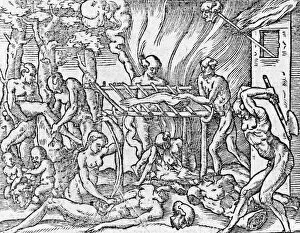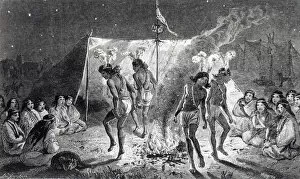South American Indian Collection
"Exploring the Rich Cultural Heritage of South American Indians" In the 16th century, South American cannibals left a lasting imprint on history
All Professionally Made to Order for Quick Shipping
"Exploring the Rich Cultural Heritage of South American Indians" In the 16th century, South American cannibals left a lasting imprint on history. Their intriguing funeral ceremony, as depicted in David Herzliberger's book published in 1748, offers a glimpse into their unique traditions. The Romance of the River Plate, Vol. I by W. H. Koebel (1914) showcases an engraving capturing this solemn event. Venturing deeper into the Amazon and Madeira Rivers, we had our first encounter with the Caripuna Indians. The Amazon and Madeira Rivers provide a backdrop for this fascinating meeting that sheds light on their way of life. Witnessing daily life in Buenos Aires was like stepping back in time - Vidals Picturesque Illustrations reveal how water carts were used to navigate its streets during earlier times. The Mundrucu tribe's head serves as a haunting reminder of Brazil's indigenous people from Travels in Brazil (litho). These tribes have faced challenges but continue to preserve their rich heritage against all odds. Celebratory moments are not amiss among South American Indians either; Festive Procession of the Tecunas from Travels in Brazil showcases their vibrant culture through lithographs that capture joyous occasions. Resourcefulness is another characteristic ingrained within these communities - using fallen tree trunks to cross Rio Paraiba do Sul demonstrates their adaptability even amidst challenging terrains. Warfare played a role too; A Coroado Indian Giving the Signal for Attack illustrates how strategic planning was crucial for survival and defense throughout history. Delving further into historical accounts reveals genealogy charts tracing Inca rulers' lineage alongside Spanish successors since Manco Capac became the first Inca king - an intricate tapestry connecting past and present generations. South America's natural resources also shaped its indigenous cultures; India-rubber manufacture along Madeira banks highlights how they harnessed nature sustainably while contributing to their livelihoods.













